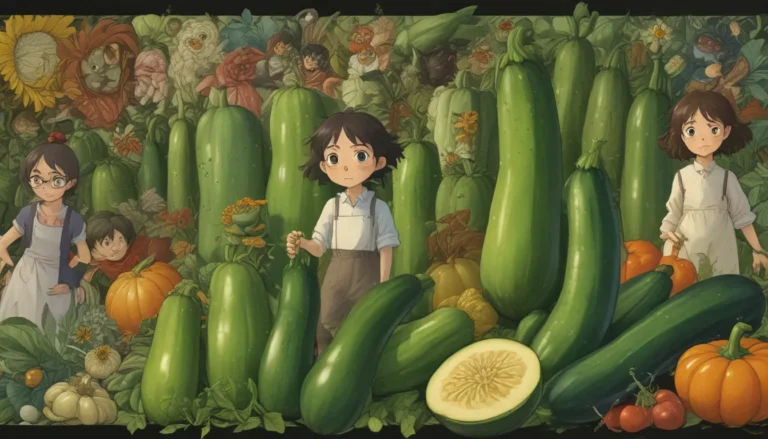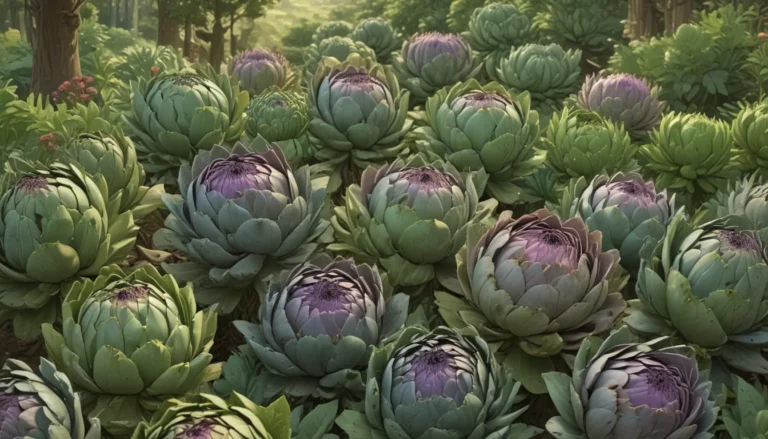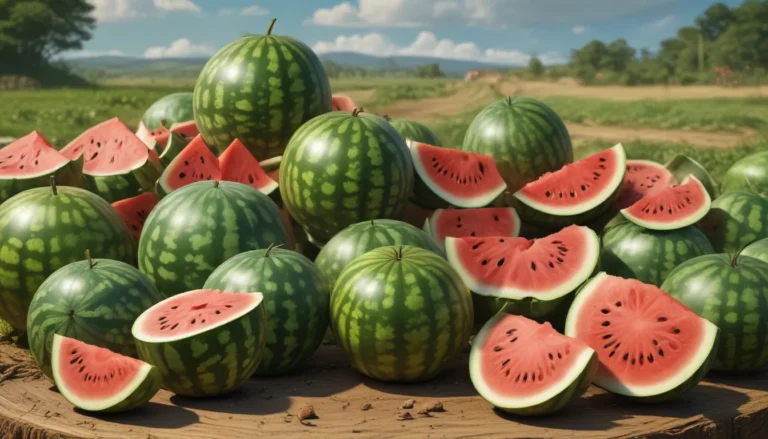An In-Depth Guide to 19 Apple Tree Varieties That Will Delight You

Have you ever planted an apple tree only to be met with disappointment when it fails to produce fruit? You’re not alone. Many of us rush to garden centers in the spring, select our favorite apple tree varieties, and eagerly plant them in our gardens. But despite our best efforts, years can pass without a single apple appearing on the tree.
But fear not! The solution to growing a thriving apple tree is both complex and simple. In this comprehensive guide, we will explore everything you need to know to choose, plant, and grow the perfect apple tree that will reward you with a bountiful harvest.
Let’s dive in and uncover the secrets to growing the best apple varieties for your garden.
Understanding the Essentials
Before we delve into the specifics of each apple variety, let’s discuss the key factors that play a vital role in successful apple tree cultivation. Understanding these essentials will pave the way for a flourishing apple orchard in your backyard.
Growing Zones
Apple trees thrive in areas with cold, crisp winters. Most varieties do not fare well in climates warmer than Zone 8. It’s essential to select apple trees that are suited to your USDA growing zone for optimal growth and fruit production.
Chill Hours
Apple trees require a certain number of “chill hours” to break dormancy and stimulate growth. These chill hours, typically between 32-45°F, are crucial for the tree’s development. Be sure to choose apple varieties that match the chill hour requirements of your region for successful cultivation.
Flowering Groups
Apple trees bloom at different times of the year, and cross-pollination between compatible varieties is essential for fruit production. Understanding the flowering groups of apple trees and ensuring you plant compatible varieties will ensure a fruitful harvest in your garden. Remember, most apple trees require a pollinator for optimal fruiting.
Height
Consider the average height of the apple tree variety you choose, as it will impact the tree’s growth and spread. Ensure you have sufficient space in your garden for the tree to reach its full height and spread comfortably.
Recommended Uses
Each apple variety offers unique qualities and uses, whether it’s eating fresh, cooking, baking, or making cider. Explore the recommended uses and special notes for each variety to select the ones that best suit your preferences and needs.
Feeling overwhelmed by the details? Don’t worry! Here’s a quick recap to simplify things:
- Plant multiple trees for fruit production or ensure proximity to a neighbor’s tree.
- Choose apple varieties suitable for your USDA growing zone.
- Plant trees with overlapping flowering periods for successful pollination.
- Ensure trees are planted within 50 feet of each other for cross-pollination.
- Different apple cultivars offer various uses, so select based on your preferences.
Exploring Apple Varieties by Flowering Groups
Let’s embark on a journey through 19 delightful apple tree varieties, categorized by their flowering groups. From early harvest to late-season favorites, there’s a perfect apple tree for every garden and taste.
Flowering Group 1
1. Early Harvest
Highlighted Features:
- Growing Zones: 3 to 8
- Chill Hours: 800 to 1000
- Pollinates with Flowering Groups: 1,2
- Height: 20 to 25 feet (dwarf varieties available)
Recommended Uses:
- Excellent for baking
- Blooms earlier than many other apple cultivars
2. Gravenstein
Highlighted Features:
- Growing Zones: 2 to 9
- Chill Hours: 700
- Pollinates with Flowering Groups: 1, 2
- Height: 15 to 20 feet
Recommended Uses:
- Ideal for cooking and cider making
- Blooms early and hardy to cold weather
Flowering Group 2
3. Lodi
Highlighted Features:
- Growing Zones: 3 to 8
- Chill Hours: 800 to 1000
- Pollinates with Flowering Groups: 1, 2, 3
- Height: 10 to 25 feet
Recommended Uses:
- Perfect for applesauce and early season pies
- Suitable for different soil types
4. McIntosh
Highlighted Features:
- Growing Zones: 4 to 7
- Chill Hours: 900
- Pollinates with Flowering Groups: 1, 2, 3
- Height: 15 to 20 feet
Recommended Uses:
- Provides a bountiful and early harvest
- Well-loved by pollinators
Flowering Group 3
5. Arkansas Black
Highlighted Features:
- Growing Zones: 4 to 8
- Chill Hours: 800 to 900
- Pollinates with Flowering Groups: 2, 3, 4
- Height: 12 to 16 feet
Recommended Uses:
- Great for cooking and late-season harvest
- Stores well for extended periods
6. Fuji
Highlighted Features:
- Growing Zones: 6 to 9
- Chill Hours: 200 to 400
- Pollinates with Flowering Groups: 2, 3, 4
- Height: 10 to 15 feet
Recommended Uses:
- Ideal for juicing and cider making
- Harvest best in early September
7. Granny Smith
Highlighted Features:
- Growing Zones: 6 to 9
- Chill Hours: 400
- Pollinates with Flowering Groups: 2, 3, 4
- Height: 18 to 20 feet
Recommended Uses:
- Perfect for snacking and baking
- Responds well to regular pruning
8. Jonagold
Highlighted Features:
- Growing Zones: 5 to 8
- Chill Hours: 700 to 800
- Pollinates with Flowering Groups: 2, 3, 4
- Height: 12 to 15 feet
Recommended Uses:
- Balanced flavor ideal for fresh eating
- Requires well-drained soils
9. Macoun
Highlighted Features:
- Growing Zones: 4 to 7
- Chill Hours: 600
- Pollinates with Flowering Groups: 2, 3, 4
- Height: 15 to 20 feet
Recommended Uses:
- Perfect for fresh eating and purees
- Requires diligent pruning
10. Pink Lady
Highlighted Features:
- Growing Zones: 6 to 9
- Chill Hours: 200 to 400
- Pollinates with Flowering Groups: 2, 3, 4
- Height: 12 to 20 feet
Recommended Uses:
- Popular choice for the American Southwest
- Best enjoyed after a month of picking
11. Red Jonathan
Highlighted Features:
- Growing Zones: 4 to 8
- Chill Hours: 700 to 800
- Pollinates with Flowering Groups: 2, 3, 4
- Height: 15 to 20 feet
12. Wealthy
Highlighted Features:
- Growing Zones: 4 to 7
- Chill Hours: 1000
- Pollinates With Flowering Groups: 2, 3, 4
- Height: 12 to 15 feet
Flowering Group 4
13. Empire
Highlighted Features:
- Growing Zones: 4 to 9
- Chill Hours: 800
- Pollinates with Flowering Groups: 3, 4, 5
- Height: About 15 feet
14. Gala
Highlighted Features:
- Growing Zones: 5 to 8
- Chill Hours: 500
- Pollinates with Flowering Groups: 3, 4, 5
- Height: 12 to 16 feet
15. Honeycrisp
Highlighted Features:
- Growing Zones: 3 to 7
- Chill Hours: 800 to 1000
- Pollinates with Flowering Groups: 3, 4, 5
- Height: 14 to 15 feet
16. Red Delicious
Highlighted Features:
- Growing Zones: 5 to 8
- Chill Hours: 700 to 800
- Pollinates with Flowering Groups: 3, 4, 5
- Height: 20 to 25 feet
17. Winesap
Highlighted Features:
- Growing Zones: 5 to 8
- Chill Hours: 800
- Pollinates with Flowering Groups: 3, 4, 5
- Height: 20 to 25 feet
Flowering Group 5
18. Northern Spy
Highlighted Features:
- Growing Zones: 3 to 7
- Chill Hours: 1000
- Pollinates with Flowering Groups: 4, 5, 6
- Height: 25 feet
19. Red Rome
Highlighted Features:
- Growing Zones: 4 to 8
- Chill Hours: 700
- Pollinates with Flowering Groups: 4, 5, 6
- Height: 10 to 14 feet
Conclusion: A Bounty of Apple Tree Varieties
As we wrap up our journey through these 19 delightful apple tree varieties, we hope you’ve gained valuable insights into selecting the perfect apple tree for your garden. Whether you prefer early harvests or late-season delights, there’s an apple variety to suit every taste and growing condition.
Remember, planting multiple trees for cross-pollination, selecting varieties suited to your growing zone, and understanding the flowering groups are key to a successful apple orchard. So go ahead, plant that apple tree, nurture it with care, and look forward to a fruitful harvest in the seasons to come.
Please feel free to share your thoughts, questions, and experiences in the comments below. We appreciate your feedback and are here to help you on your apple-growing journey!
For more information on caring for apple trees, check out our guides on protecting apple trees in winter, identifying common apple diseases, and harvesting apples.
Happy planting and happy harvesting!





